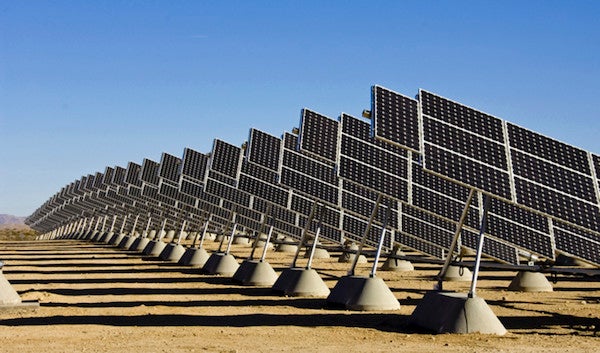When plans for new solar power development start piling up in gigawatts instead of megawatts, it’s time for natural gas stakeholders to start worrying. That’s the case in Nevada, where natural gas still maintains a tight grip on electricity generation but solar power is coming on strong.

More Solar Power For Nevada, Less Coal
Nevada has an advantage when the topic turns to renewable energy from the sun. It ranks high among US states for solar potential, and it is living up to its standing. Nevada currently holds the 4th highest slot in the US for installed solar capacity (up from 5th place last year), with a hair over 3.5 gigawatts.
The latest news about solar power in Nevada concerns NV Energy. The company has just won approval for a plan to add 1.19 more gigawatts of solar power to the state’s renewable energy profile.
The firm has had its ups and downs with solar advocates and environmental organizations over its solar power policies, but the new announcement is a big step forward for the renewable energy transition.
The new solar additions will replace two coal power plants scheduled for shutdown. Last December, the state’s Pubic Utilities Commission approved a plan for NV Energy to retire one of the plants four years ahead of its former schedule, in 2021. The other plant will close in 2013, pending approval.
The two coal plants, North Valmy units 1 and 2, have a combined capacity of 522 megawatts. They are the last two utility-owned coal power plants in Nevada.
More Solar, Less Gas
Coal is falling into the dustbin of history for power generation in the US. Natural gas is the next domino to fall, but that’s going to be a tough row to hoe, especially in Nevada.
As of 2017, 70% of the state’s electricity generation came from natural gas, and as of last December NV Energy was leaving open the option of converting North Valmey Unit 2 to natural gas.
That idea seems to be fading away, though. Last spring Nevada Governor Steve Sisolak signed a new state law that required energy companies to get their portfolio up to the 50% mark for renewables by 2030.
The 1.19 gigawatts in new solar capacity will be spread among three projects in southern Nevada, near the Las Vegas area. Here’s the rundown from NV Energy (condensed for an easy read):
Arrow Canyon Solar Project — 200 megawatts, located in Clark County, 20 miles northeast of Las Vegas on the Moapa Band of Paiutes Indian Reservation, developed by EDF Renewables North America.
Southern Bighorn Solar & Storage Center — 300 megawatts, also located in Clark County on the Moapa River Indian Reservation, developed by 8minute Solar Energy.
Gemini Solar + Battery Storage Project — 690 megawatts, also located in Clark County, on 7,100 acres of federally-owned land under the management of the Bureau of Land Management, developed by Quinbrook Infrastructure Partners in collaboration with Arevia Power.
What About Energy Storage?
All three projects include a copious amount of energy storage, including the Arrow Canyon project.
That’s what should really set gas stakeholders’ hair on fire. At utility scale, the solar-plus-storage trend is beginning to nudge into the natural gas space for 24/7 electricity delivery.
That’s where things get interesting. In reaching the decision to achieve the three new solar power projects, Nevada PUC relied on analysis by The Brattle Group.
Brattle just broadcast its finding to the rest of the world yesterday. The company ran down the factors supporting solar-plus-storage in Nevada and came up with this list:
1. Demand for firmed solar generation as a capacity resource (and growing reluctance to contract for new gas capacity) is evidenced by recent utility procurements.
2. Efficiencies of co-location reduce costs and increase revenues of solar-plus-storage investments.
3. Declining costs of both solar and storage make the hybrid resources increasingly competitive with other resources.
4. The Federal Investment Tax Credit (ITC) provides up to a 30% reduction in storage costs, if paired with solar.
5. State solar and storage mandates prioritize deployment of those resources, reflecting priorities of policymakers and regulators.
That’s not all. Brattle found that co-location is not the only pathway for increasing the interplay between solar power and energy storage. Standalone energy storage projects are beginning to compete with solar-plus-storage hybrids on cost, providing energy stakeholders with more options for siting storage projects.
No Country For Old Fuel
Meanwhile, gas is also facing pressure from the building electrification trend, which has built up a good head of steam over the past couple of years.
Electricity advocates are pushing for older buildings to switch from natural gas to clean kilowatts for heating, cooling, cooking, and other uses. Meanwhile, several US cities are considering bans on gas hookups in new construction.
Berkeley, California, has already taken the leap into banning new gas hookups. According to a report last summer in S&P Global, oil and gas stakeholders in the region are already concerned that the gas-to-electricity movement could spill over into Nevada and elsewhere. Hold on to your hats!





